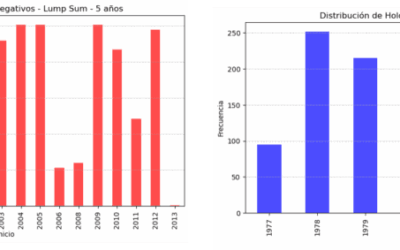You’ve probably read or heard the terms “value investing” or “value stocks”. Even we, the Boring Investment team, tend to use these concepts to categorize the kind of investments that we consider suitable for anybody looking to become wealthy by putting their money to work for them.
But… What are value stocks? How do you recognize them? Can beginners invest in value stocks or are they reserved to experts? Today, we aim to answer these questions by showing you how to identify value stocks for beginners.
What Are Value Stocks?
Definition and key characteristics
Let’s start by defining the key term: value stocks are stocks that are trading for less than their true value according to the company’s fundamentals. The stock market sometimes undervalues good companies, often due to short-term factors like negative headlines or broader market trends.
So, value stocks are fundamentally sound companies whose share prices are low compared to what they are able to generate (in terms of profitability) due to market or sector-related events. Nevertheless, investors who analyze the companies anticipate that the share price will eventually increase due to the attractiveness of their underlying fundamentals.
Value vs. growth stocks
Value stocks tend to be more stable. Even when they might be undervalued, they are typically established companies with solid fundamentals, stable earnings, strong balance sheets, and a history of consistent performance – making them attractive for long-term investors looking for steady returns. This makes them less risky than growth stocks and a safer bet, especially during periods of market volatility or inflation.
On the other hand, growth stocks tend to have explosive growth potential. They belong to companies that are expanding rapidly, often reinvesting profits to fuel further growth (rather than paying dividends). While growth stocks can offer high returns, they are usually priced on speculation and rely on future earnings potential rather than current financial strength.
Why are growth stocks riskier than Value stocks?
From the previously said, it follows that growth stocks tend to be riskier because their valuations are often based on optimistic future projections rather than current earnings.
Growth stocks are more sensitive to market fluctuations and economic downturns, as investors may shift toward safer assets when uncertainty arises. In contrast, value stocks are generally less volatile because they are backed by tangible financial strength, making them a more stable investment option.
To understand this point, Benjamin Graham’s concept of margin of safety is very useful. It’s the difference between a stock’s price and its intrinsic value. The further a stock’s price is below its intrinsic value, the greater the margin of safety against future uncertainty and the greater the stock’s resiliency to market downturns.
Let’s examine, for example, the case of Tesla stocks, which plunged by over 50% from December 2024 to March 2025, a dramatic collapse that has stunned shareholders. In mid-December 2024, Tesla traded near an all-time high of around $480 per share; by early March 2025, it had sunk to roughly $220. This wipeout erased over $800 billion in market value.
This shows that volatility is the price of admission with growth stocks like Tesla. Investors who rely on these types of stocks -usually endorsed on the speculation and hype of the tech sector- have learned the bad way that when a stock’s price starts far outrunning its fundamentals, as Tesla’s did, it probably won’t be sustainable.
Key Metrics to Identify Value Stocks
We’ve talked about analyzing company’s fundamentals to recognize value stocks, at Boring Investment we use a reliable formula successfully tested to determine which stocks are worth investing in and when.
These are some elements you could have in consideration when looking for value stocks:
- Price-to-Earnings (P/E) Ratio: The Price-to-Earnings (P/E) ratio is a key valuation metric used to assess how much investors are willing to pay for each dollar of a company’s earnings. It is calculated by dividing the stock price by the company’s earnings per share (EPS). A lower P/E ratio may indicate that a stock is undervalued compared to its earnings, making it a potential value investment. However, it is important to compare P/E ratios within the same industry, as different sectors tend to have varying average ratios.
- Price-to-Book (P/B) Ratio: The Price-to-Book (P/B) ratio compares a company’s market price to its book value, which represents its net assets. This ratio is calculated by dividing the stock price per share by the book value per share. A P/B ratio below 1 suggests that a stock may be undervalued, meaning the company is trading for less than its actual net worth. Investors often use the P/B ratio to identify value stocks with strong assets relative to their market price.
- Dividend Yield: Dividend yield measures the return investors receive in the form of dividends relative to a stock’s price. It is calculated by dividing the annual dividend per share by the stock price. A higher dividend yield can be attractive to value investors seeking steady income, especially in well-established companies with a history of consistent payouts. However, an extremely high yield may indicate financial distress, so it is crucial to analyze the company’s ability to sustain dividends over time.
- Return on Invested Capital (ROIC): Return on Invested Capital (ROIC) measures how efficiently a company uses its capital to generate profits. It is calculated by dividing net operating profit after taxes (NOPAT) by total invested capital. A high ROIC indicates that a company is using its resources effectively to generate strong returns, which is a key characteristic of high-quality value stocks. Investors use ROIC to identify businesses with sustainable competitive advantages and efficient capital allocation.
- Earnings Yield: Earnings yield is the inverse of the P/E ratio and is calculated by dividing a company’s earnings per share by its stock price. It represents the percentage return an investor would theoretically earn if the company’s profits were distributed as earnings. A high earnings yield suggests that a stock may be undervalued, making it an appealing option for value investors looking for stocks with strong income potential relative to their price.
- Debt-to-Equity (D/E) Ratio: The Debt-to-Equity (D/E) ratio evaluates a company’s financial leverage by comparing its total debt to its shareholders’ equity. A lower ratio suggests a more financially stable company with less reliance on borrowing, which is often desirable for value investors looking for low-risk opportunities. Conversely, a high D/E ratio may indicate excessive debt, which can increase financial risk, especially during economic downturns.
- Free Cash Flow (FCF): Free cash flow (FCF) represents the cash a company generates after covering its capital expenditures. It is a crucial measure of financial health, as it indicates a company’s ability to reinvest in growth, pay dividends, or reduce debt. Companies with strong free cash flow are often attractive value investments, as they have greater flexibility to weather economic downturns and return value to shareholders.
Stock Searcher
If you don’t know how or where to start with the fundamentals analysis, check our stock searcher where you can verify if your investment idea or stock in your portfolio is the best option compared to peers.
For example, this is the value investment report our tool generates for Apple: https://app.theboringinvest.com/#/stock/AAPL
Access the full list of stocks that you consult here: https://www.theboringinvest.com/stock-list
Value Traps
When a stock is cheap for a reason
A value trap occurs when a stock appears to be undervalued based on traditional valuation metrics (such as the previously described) but is actually cheap for a reason – usually due to fundamental business weaknesses or declining future prospects. Investors who mistake these struggling companies for true value stocks may end up holding onto stocks that continue to lose value.
Even when ratios like price-to-earnings (P/E) or price-to-book (P/B) are promising, there may be long-term structural weaknesses. Therefore, before investing, it’s crucial to analyze financial health, industry trends, and management quality to distinguish between a genuine opportunity and a stock that will keep losing value.
How to avoid them with Boring Investing
To avoid these value traps, we recommend you to use our platform. Because it utilizes a proprietary financial scoring system that thoroughly analyzes companies to ensure they have sustainable competitive advantages. One key metric we emphasize, for example, is Return on Invested Capital (ROIC), which serves as an indicator of management quality and a company’s ability to generate returns above its cost of capital. By having in consideration our data-driven analysis, you can confidently identify real value stocks and steer clear of companies that may seem like bargains but lack the fundamentals for long-term success.
Conclusion
Patience and Discipline in Value Investing
In the past, we’ve made emphasis on the psychological aspect of value investing. Identifying value stocks requires more than just understanding financial metrics – It demands patience and discipline. Value investing is a long-term strategy that will reward you if you are willing to wait for the market to recognize a stock’s true worth.
Short-term price fluctuations and market sentiment can create buying opportunities, but only those with the discipline to hold their positions through volatility can fully benefit. Avoid emotional decision-making and stay committed to fundamental analysis to distinguish between genuine value opportunities and potential value traps.
Patience is essential because undervalued stocks don’t always rebound immediately. It may take months or even years for the market to correct mispricing, but history has shown that disciplined and patient investors who focus on strong financials and sustainable business models are often rewarded over time.
By applying key valuation metrics, avoiding speculative hype, and maintaining a long-term perspective, beginners can build a solid foundation in value investing and increase their chances of long-term success.
If you are a beginner getting started in this fascinating world of investments, don’t wait any longer and join us!




0 Comments